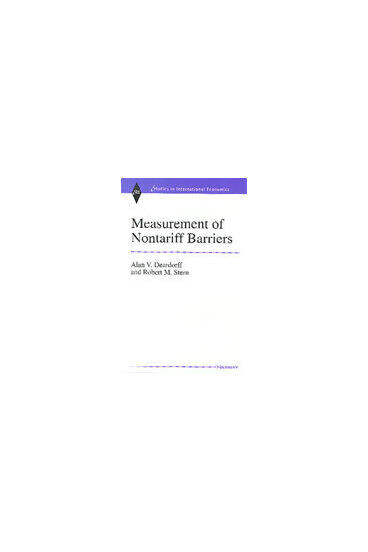Measurement of Nontariff Barriers
Evaluates methods for measuring nontariff barriers and recommends the most effective procedures
Description
As tariffs on imports of manufactures have been reduced as a result of multi-lateral trade negotiations, interest in the extent to which existing nontariff barriers may distort and restrict international trade is growing. Accurate and reliable measures are needed in order to address the issues involving the use and impacts of nontariff barriers. This study assesses currently available methods for quantifying such barriers and makes recommendations as to those methods that can be most effectively employed. The authors focus both on the conceptual issues arising in the measurement of the different types of nontariff barriers and on the applied research that has been carried out in studies prepared by country members of the OECD Pilot Group and others seeking to quantify the barriers.
Nontariff barriers include quotas, variable levies, voluntary export restraints, government procurement regulations, domestic subsidies, and antidumping and countervailing duty measures. The authors discuss the many different methods available for measuring the effects of these and other nontariff barriers. Illustrative results are presented for industrial OECD countries, including Australia, Canada, Germany, Norway, the European Union, the United Kingdom, and the United States. Finally, the authors offer guideline principles and recommend procedures for measuring different types of nontariff barriers.
Economists, political scientists, government officials, and lawyers involved in international trade will find this an invaluable resource for understanding and measuring NTBs.
Alan V. Deardorff and Robert M. Stern are Professors of Economics and Public Policy, University of Michigan.

